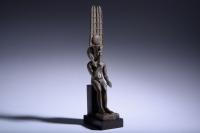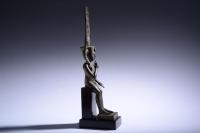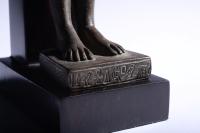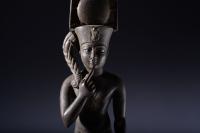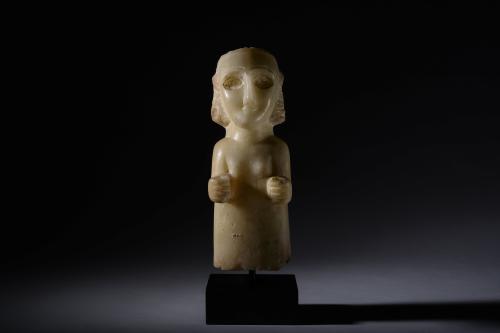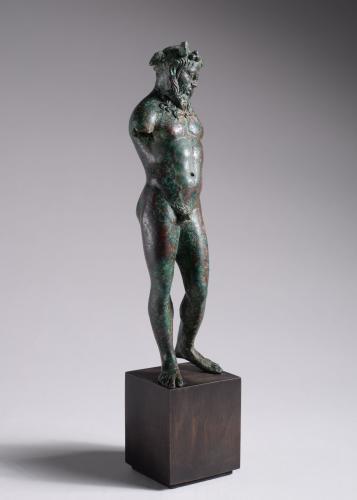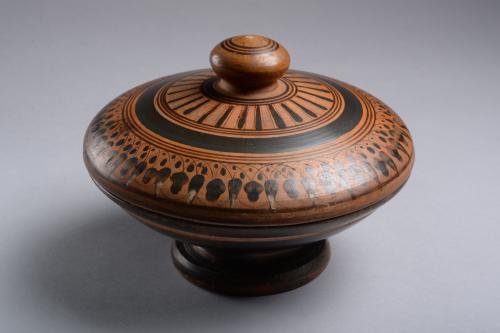
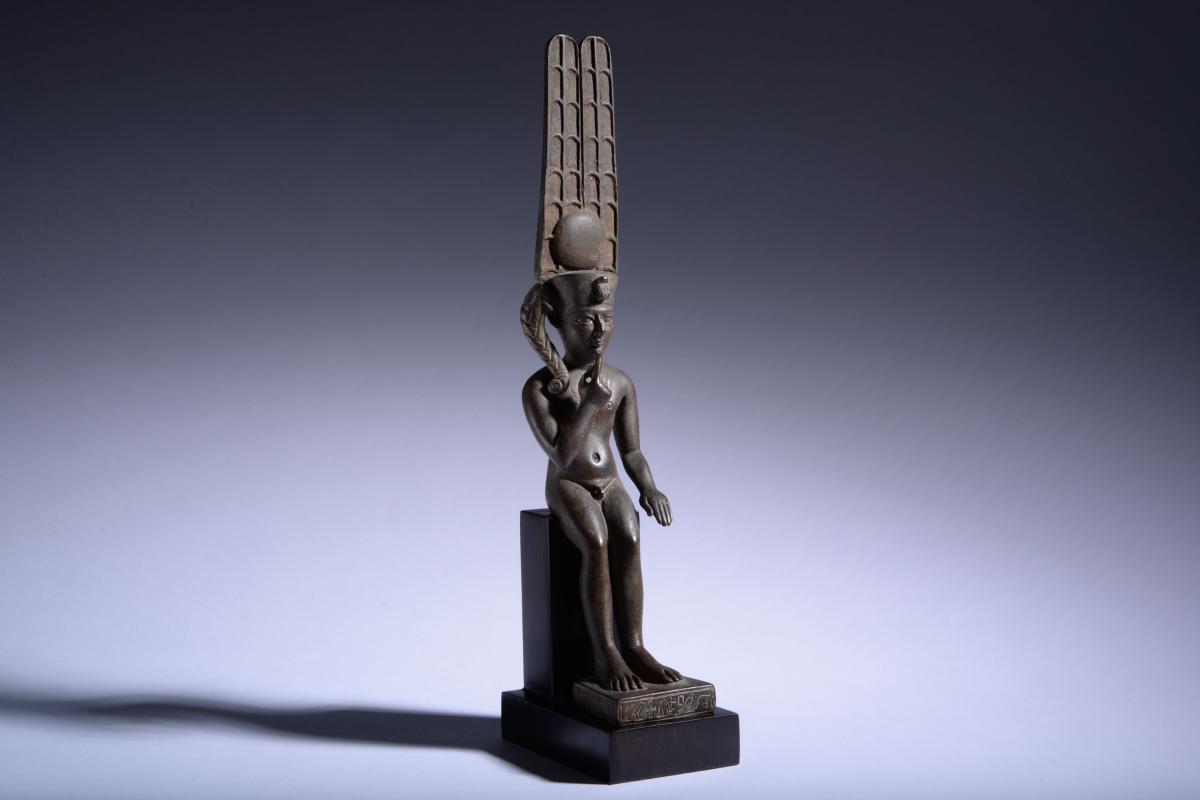
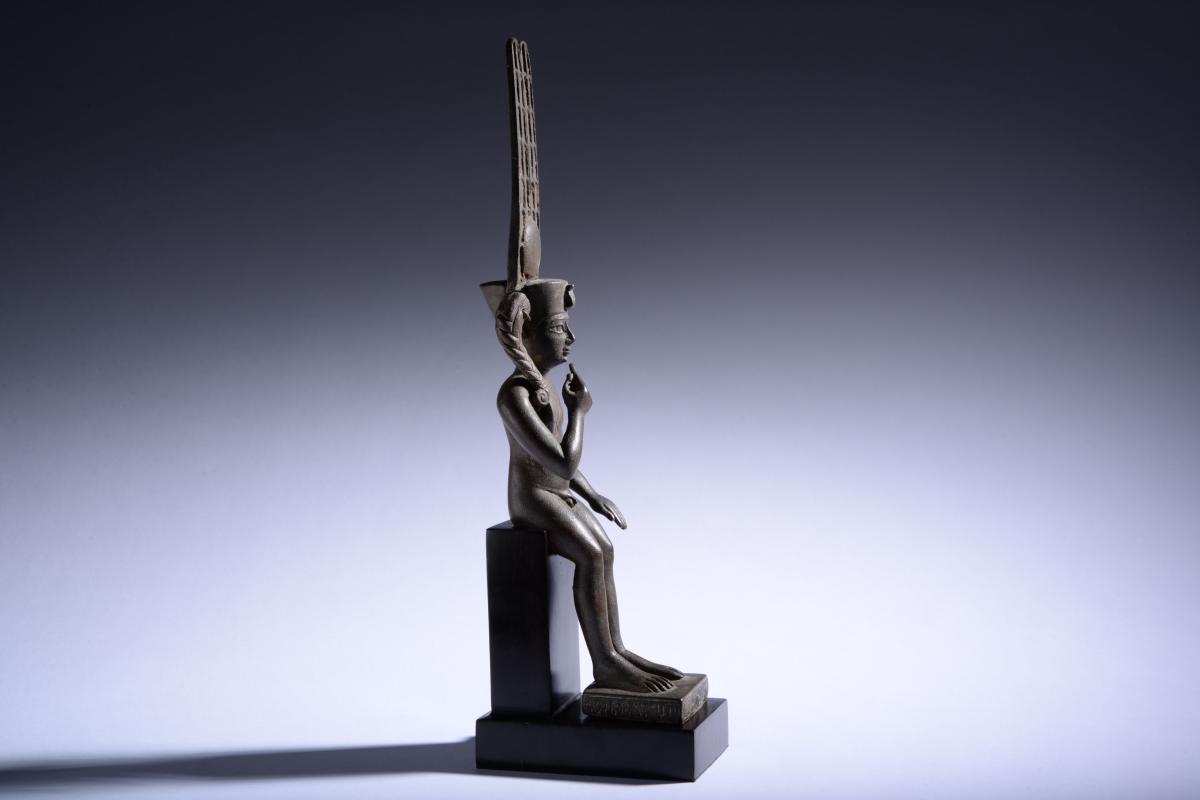
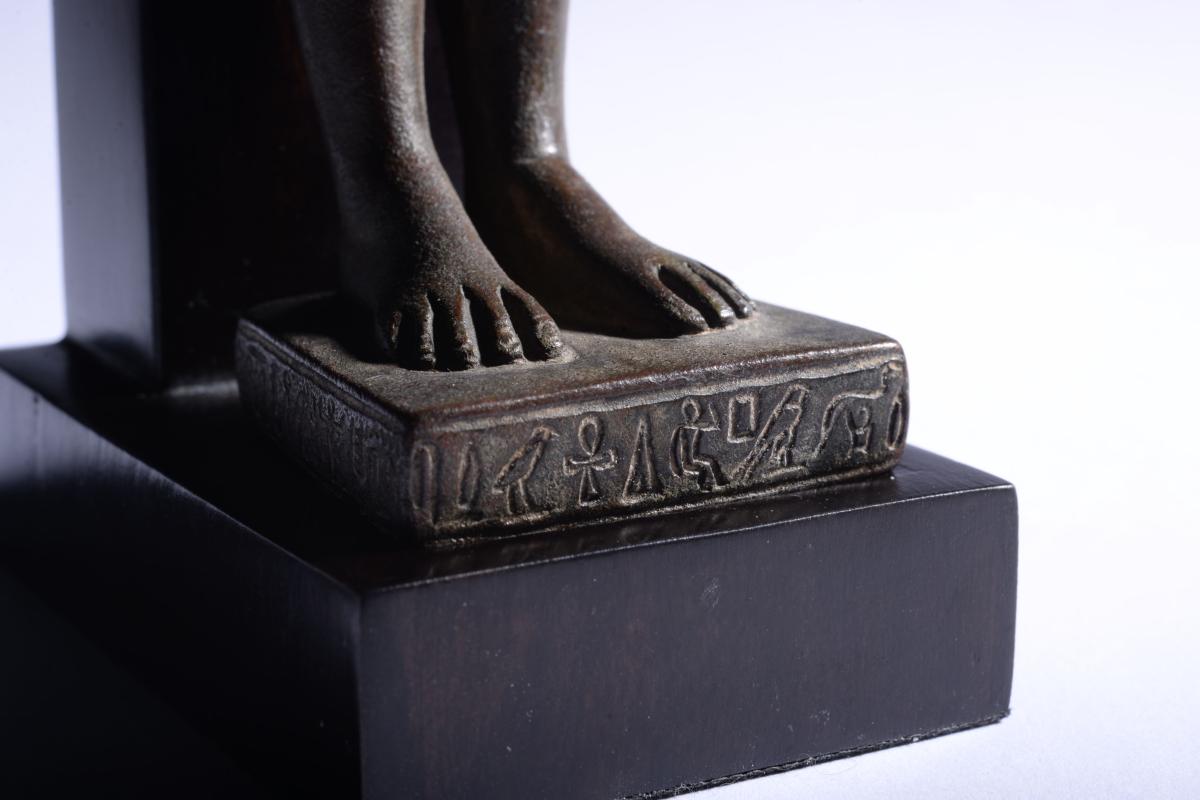

This object is eligible for a Certificate of BADA Provenance
The BADA Standard
- Since 1918, BADA has been the leading association for the antiques and fine art trade
- Members are elected for their knowledge, integrity and quality of stock
- Our clients are protected by BADA’s code of conduct
- Our dealers’ membership is reviewed and renewed annually
- Bada.org is a non-profit site: clients deal directly with members and they pay no hidden fees
Egyptian Bronze Statue of Harpocrates, Late Period, circa 664-30 B.C. Bronze with silver inlay.
Harpocrates - that is, the infant Horus - enthroned, the face fixed in a playful, al most teasing, expression, the lips curled gently as if smirking; the eyes, inlaid in silver, wide and almond-shaped. He wears the double-feather crown of Amun, complete with the sun disk and uraeus, from which falls the triple-braided ‘sidelock of youth’, identifying him, in the symbolic language of the Ancient Egyptian world, as an heir of Osiris. This has been separately cast, finely incised, and attached to the statuette with a ring. The symmetry of the body, sensitively modelled - the slight potbelly and smoothness of the bronze emanating an aura of youthfulness - is broken only by the gesture of the right arm, the index finger outstretched and raised to the mouth. The torso, to which the artist appears to have paid particular attention, is adorned with incised detailing, such that even the beads of the string of his necklace can be made out. The feet rest upon a trapezoidal base, bearing an inscription which reads:
‘’Recitation by Harpocrates: Life, Prosperity, Health! Health and a high, great, big, beautiful lifespan (for) Hemet (or, the servant?). May she live and prosper (?), the Lady of the House Ta-heret...servant of Horus (?)’’
Harpocrates - a Hellenization of the name ‘Heru-pa-khered’ - depicted here in his guise of a young boy, represents Horus the child, son of Isis and Osiris and Egypt’s tutelary deity. As such, he personified the newborn sun as it first breaks the horizon each morning, as well as the sun as it appears during winter, and of the budding flora which heralds the coming of spring. Since it was Horus who struggled with Set, the god of chaos and violence, who had slain and usurped his father, Harpocrates was also regarded as a kind of protector deity - he most commonly appears on what are known as the Cippi of Horus, a kind of magical stele which stood in the courtyards of many Egyptian temples, depicting the young god standing triumphant over a crocodile, clasping the bodies of various deadly animals native to the Egyptian desert in his clenched fists. A worshipper would recite the incantation inscribed below the image of the deity, and thereby acquire his protection, typically against the venomous bites and wounds of snakes and scorpions, since Harpocrates himself had once been cured of a snake bite, by his mother Isis and the god Thoth.
Height: 23.1 cm
Provenance:
Dina (1928-2021) and Raphael (1924-1999) Recanati, New York, acquired by circa 1974; thence by bequest.
The BADA Standard
- Since 1918, BADA has been the leading association for the antiques and fine art trade
- Members are elected for their knowledge, integrity and quality of stock
- Our clients are protected by BADA’s code of conduct
- Our dealers’ membership is reviewed and renewed annually
- Bada.org is a non-profit site: clients deal directly with members and they pay no hidden fees


